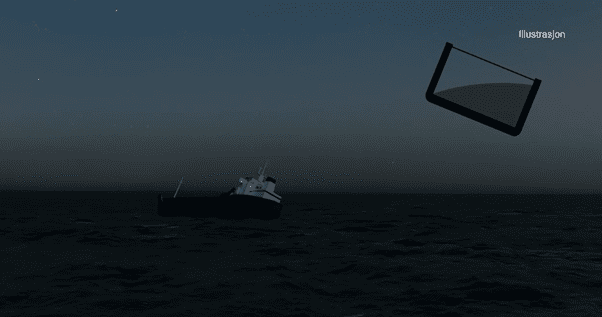
Cargo displacement of 1,900 tonnes of partially liquefied soil was, according to the Norwegian Safety Investigation Authority’s assessment, the cause why the bulk carrier MS Bjugnfjord sank on its way out of the Kattegat. According to the NSIA investigation, it is in practice difficult to have an overview of the characteristics of different masses in these type of freight assignments.
The Norwegian Safety Investigation Authority recommend the Norwegian Maritime Authority to investigate the extent of the problem and take relevant measures to ensure that the provisions in the current regulations on cargo on cargo-ships and barges are complied with.
All five on board were rescued from MS Bjugnfjord before it sank on the evening of 20 January 2022. The incident occurred in connection with the 65.8 meter long vessel transporting over 1,900 tonnes of soil from a landfill in Copenhagen to Randers in Denmark. The cargo ship’s hold was not equipped with bulkheads to prevent cargo shifting.
The Norwegian Safety Investigation Authority (NSIA) considers it likely that there was moisture in part of the stockpile and thereby in the soil that was taken on board. During the voyage, the vessel was exposed to wind from starboard, in addition to increasing wave heights as they entered open waters. The ship’s movements thereby caused the cargo to shift when moist cargo behaved more like liquid cargo, and the vessel started listing, first to port and then to starboard.
When the captain decided to turn, a major list occurred, this time to starboard. The crew realized within a short time that the vessel was about to be lost. They issued a distress call and evacuated ‘Bjugnfjord’ by jumping into the sea wearing survival suits.
All five on board were eventually rescued by rescue helicopter.
The NSIA’s investigation shows that the way the stockpile was composed of material received from different construction sites, it was very difficult to keep an overview of the properties of the soil to be transported by bulk carrier. The NSIA believes there were no mechanisms in place to identify whether the soil had inherent properties that meant the cargo could become unstable (liquify) when the moisture content exceeded a certain limit.
For transport assignments where it is not practically possible to obtain information about the properties of the cargo, only the design of the vessel may help to reduce the potential consequences of cargo shifting. In such case, the uncertainty associated with the properties of the cargo must be addressed through the vessel’s design and stability characteristics.
The NSIA believes that there is probably little knowledge in the industry of the requirements for documenting the properties of soil masses that are to be carried as bulk cargo. This safety issue has previously been addressed to the Norwegian Maritime Authority but only partially followed up, the NSIA therefore submits a new recommendation regarding this matter.
Source: NSIA


